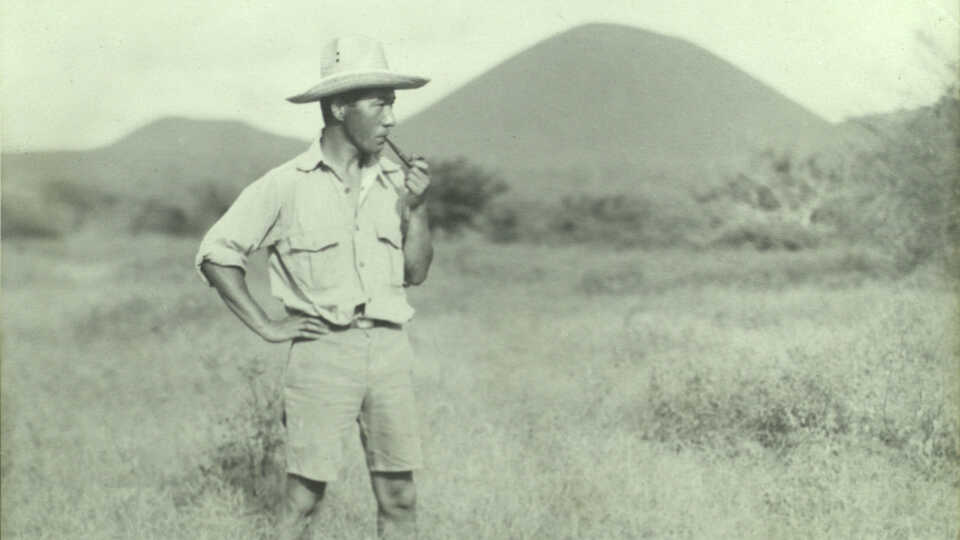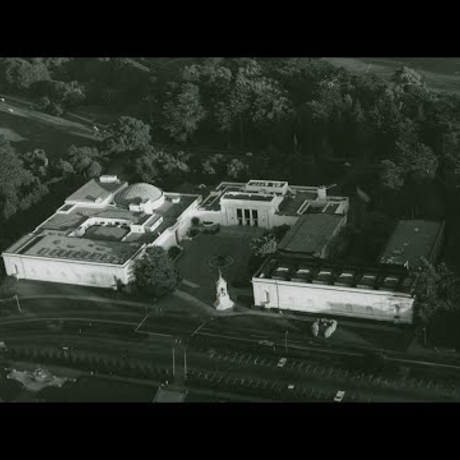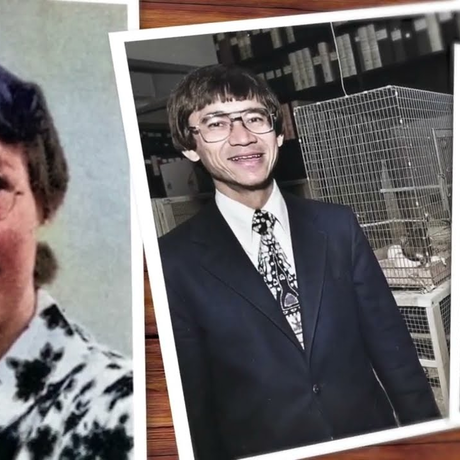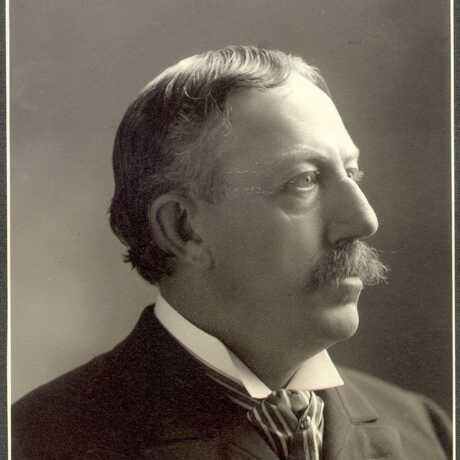By 1924, Toshio Asaeda was living in New York City, learning English at the YMCA and working at a coffee shop. He soon got a new job working at the studio of James L. Clark, a hunter, artist, and taxidermist who was in charge of the exhibit and diorama preparation at the American Museum of Natural History. Asaeda credits his time spent there (about 2 years between 1924 to 1926) as teaching him his skills in taxidermy.
From 1926 until about 1929, much of Asaeda’s time was spent working between Los Angeles and San Francisco. While in the Bay Area, his skill at specimen painting brought him into contact with two men who would be directly tied to the Academy: President of Stanford David Starr Jordan and biologist Barton Warren Evermann, both of whom worked primarily with fish and both of whom commissioned Asaeda for scientific paintings. Both men would end up in prominent positions at the Academy of Sciences.
Those years (from the mid-1920s to 1930) were marked by lots of movement, as Asaeda traveled between New York City and California working short-term jobs. By the time of the stock market crash of 1929, Asaeda had been awarded first prize in The Nature Study Classification, a Kodak-sponsored photography competition reported on in the New York Times. By 1930, he was back in San Francisco working in a color photography print studio. The economic instability and his own natural adventurous streak led Asaeda, through his connection with Barton W. Evermann, to search for different kinds of work. He would find it with author Zane Grey, who had a ship and was planning to host an expedition.
At the end of 1930 until August of 1931, the crew traveled throughout the South Pacific visiting several of its island nations. Asaeda painted watercolors and, on Dr. Evermann's request, collected fish specimens for the Academy. When Zane Grey's expedition ended, he was back in San Francisco. Dr. Evermann, impressed by Asaeda's skill, found him work making illustrations for the Steinhart Aquarium at the Academy. It was not long before another opportunity arose with one Charles Templeton Crocker. The self-styled explorer and grandson of railroad tycoon Charles Crocker, C.T. Crocker employed Asaeda on a 1932 expedition to the Galapagos Islands. Asaeda was possibly the first Japanese person to be part of such an expedition to those islands.
For the rest of the 1930s, Asaeda was on expedition after expedition, most with C.T. Crocker on his yacht the Zaca. Throughout the decade, he traveled throughout Eastern Polynesia and Hawai'i, Central and South America, all the while making photographic prints and watercolors of collected animals. In between expeditions, in 1936, Asaeda also got married to Suzuka Tanizaki.



